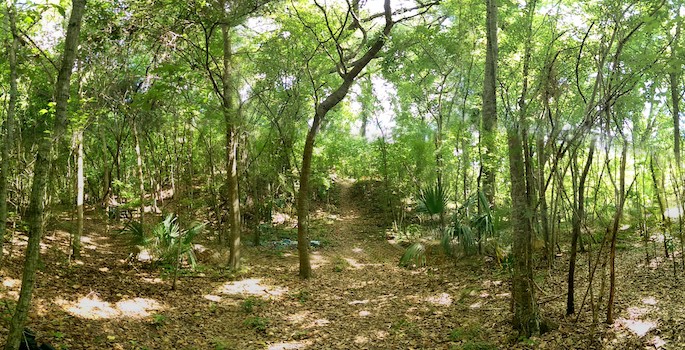
Prehistoric people of the Mississippi Delta may have abandoned a large ceremonial site due to environmental stress, according to a new paper authored by Elizabeth Chamberlain, a postdoctoral researcher in Earth and environmental sciences, and University of Illinois anthropologist Jayur Mehta.
The study, published online May 18 in the peer-reviewed Journal of Island and Coastal Archaeology, used archaeological excavations, geologic mapping and coring, and radiocarbon dating to identify how Native Americans built and inhabited the Grand Caillou mound near Dulac, Louisiana. The work stemmed from research begun by Mehta and Chamberlain when they were graduate students at Tulane University.

The researchers found that construction of the Grand Caillou mound began around 800 years ago, when Bayou Grand Caillou was a major and active river channel. The site appeared to have been abandoned around 600 years ago, the same time Bayou Grand Caillou stopped carrying a significant portion of Mississippi River water and sediment.
“Dating an abandonment event can be challenging,” Chamberlain said. “Within our suite of radiocarbon ages at Grand Caillou, there were none younger than 600 years. This suggests that people may have moved on to a new site at that time.”
“The abandonment of the river channel would have caused a number of changes to the ecology and landscape at the Grand Caillou mound,” Mehta added. “This may be an early example of people responding to changes in Mississippi Delta landscape by relocating.”
The researchers also found that the location and architecture of the mound—it stands 20 feet tall—indicated a great degree of environmental and engineering expertise among the people who built it.
“This region is naturally high elevation, and offered access to waterways for transportation and hunting,” Mehta said.

Geologic coring showed that the mound was built in alternating layers of sand and mud. While sand is a common deposit near the mound, mud must have been imported from farther away.
“This demonstrates a high level of geotechnical knowledge by native people, and a big group effort in mound construction,” Chamberlain said. “Waterlogged mud is heavy, and all this material was moved by hand.”
The study also used artifacts recovered from the mound to identify the culture of the people who lived there. This helped to connect the Grand Caillou inhabitants with mound-building groups farther upstream in the Mississippi River Valley and along the Gulf Coast.
“Research such as this is especially important in light of recent published work showing that net land loss will continue in the Mississippi Delta,” Chamberlain said.
“Archaeological sites are a non-renewable resource,” Mehta added. “With the loss of coastal land, we also risk losing these valuable records of how prehistoric people lived in the Mississippi Delta. It is critical to recover and document archaeological records before they slip beneath the sea.”